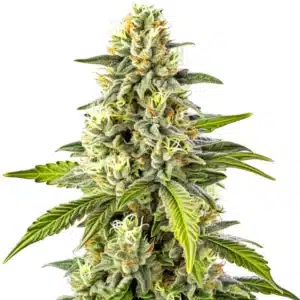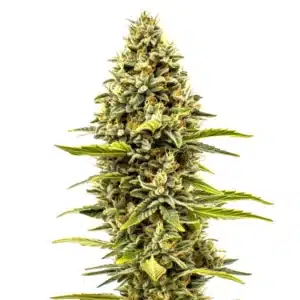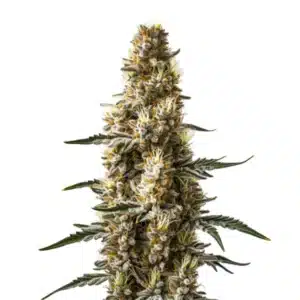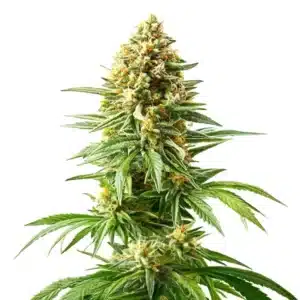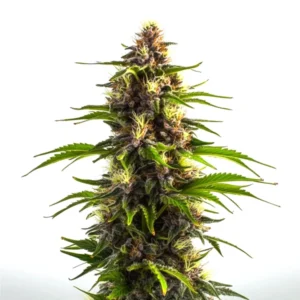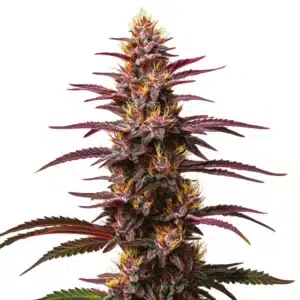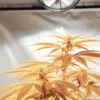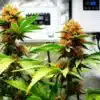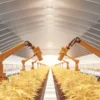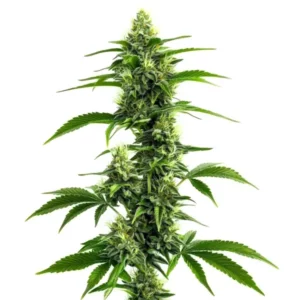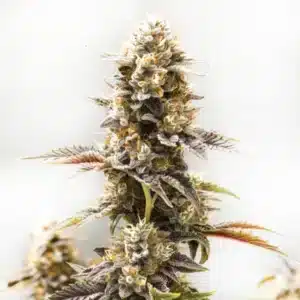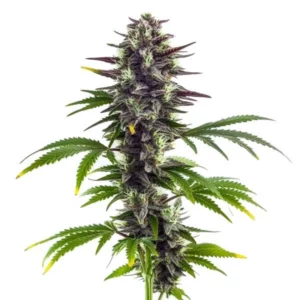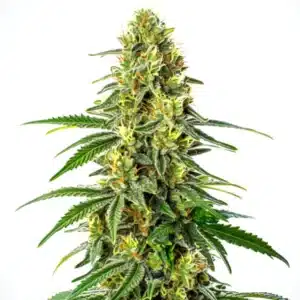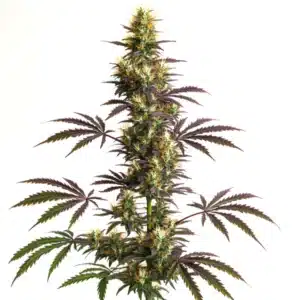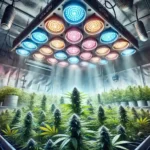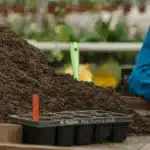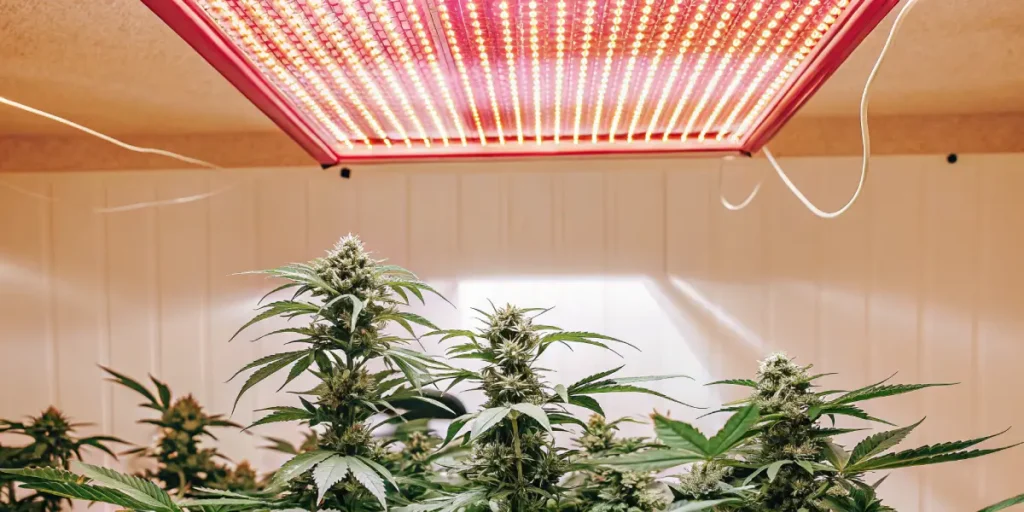
Best Light Schedule for Cannabis Maximum Yields
Light Schedules for Cannabis Growth
Why Light is Essential for Cannabis Growth
The right light schedule for weed is crucial to healthy growth. During the seedling and vegetative phases, cannabis plants typically thrive under 18 hours of light followed by 6 hours of darkness (18/6 cycle). Once they enter the flowering stage, they require an even split of 12 hours of light and 12 hours of dark to trigger bud production. Autoflowering varieties, however, are less dependent on strict light cycles and can flourish with extended light exposure, some growers even use a full 24-hour light schedule.
Light is the driving force behind photosynthesis, the process plants use to convert light into energy. For cannabis, light not only fuels growth but also influences the plant’s developmental stages, including vegetative growth and flowering. The right light schedule ensures your plants receive the necessary energy to thrive.
Recommended Strains
Cheese
|
|
THC | 14% - 18% (Medium) |
|
|
Type | Feminized |
|
|
Yield | Medium |
|
|
Phenotype | 60% Indica / 40% Sativa |
Cheese Auto
|
|
THC | 10% - 15% (Low) |
|
|
Type | Autoflowering |
|
|
Yield | Medium |
|
|
Phenotype | 75% Indica / 25% Sativa |
A well-implemented light schedule can mean the difference between a mediocre harvest and a bountiful one. This makes choosing the best light schedule for cannabis a critical factor for any grower, whether novice or expert. Additionally, light affects the plant’s ability to produce cannabinoids and terpenes, directly influencing its potency and flavor profile.
The Role of Photoperiod in Plant Development
Cannabis plants are photoperiod-sensitive, meaning their growth stages are triggered by changes in light exposure. During the vegetative stage, longer light hours promote rapid growth, while shorter days signal the flowering stage. Understanding these photoperiod requirements is key to successful cultivation.
For photoperiod strains, maintaining a consistent light schedule is vital. Inconsistent lighting can stress the plants, potentially leading to lower yields or hermaphroditism. Additionally, photoperiod manipulation can be used to stagger harvests or maximize the plant’s genetic potential, making photoperiod management a cornerstone of advanced cultivation techniques.
Promos & Deals
Light Schedules for Different Growth Stages
Germination: Minimal Light Requirements
During germination, cannabis seeds require minimal light. Focus on warmth and moisture to encourage the seeds to sprout. Once the seedlings emerge, introduce low-intensity lighting to help them develop their first set of leaves.
Although light isn’t the primary concern in this stage, ensuring a gentle introduction can set the stage for healthy growth. A simple 18-hour light schedule works well as seedlings transition into the vegetative phase. Proper humidity levels and light exposure at this stage also ensure uniform sprouting, which is vital for large-scale cultivation.
Vegetative Stage: Optimal 18/6 Light Schedule
The vegetative stage is all about building structure. An 18 hours light and 6 hours dark schedule allows plants to grow vigorously while conserving energy. During this phase, light intensity and duration are critical for healthy foliage and root development.
Using high-quality grow lights, such as LEDs, ensures the plants receive the optimal spectrum for vegetative growth. Consistency in the light schedule helps plants establish strong foundations, making this one of the best light schedules for cannabis. For commercial growers, this stage also offers an opportunity to fine-tune nutrient delivery in sync with light cycles for maximum efficiency.
Flowering Stage: Transition to 12/12 Light Cycle
To induce flowering in photoperiod cannabis strains, switch to a 12 hours light and 12 hours dark schedule. This mimics the natural light conditions of late summer and triggers the plant to produce buds.
Maintaining complete darkness during the off hours is essential. Even a small light leak can disrupt flowering, delaying growth and reducing yields. Investing in a well-sealed grow space ensures your plants reach their full potential. Additionally, precise control during this stage can enhance resin production, terpene profiles, and overall bud density.
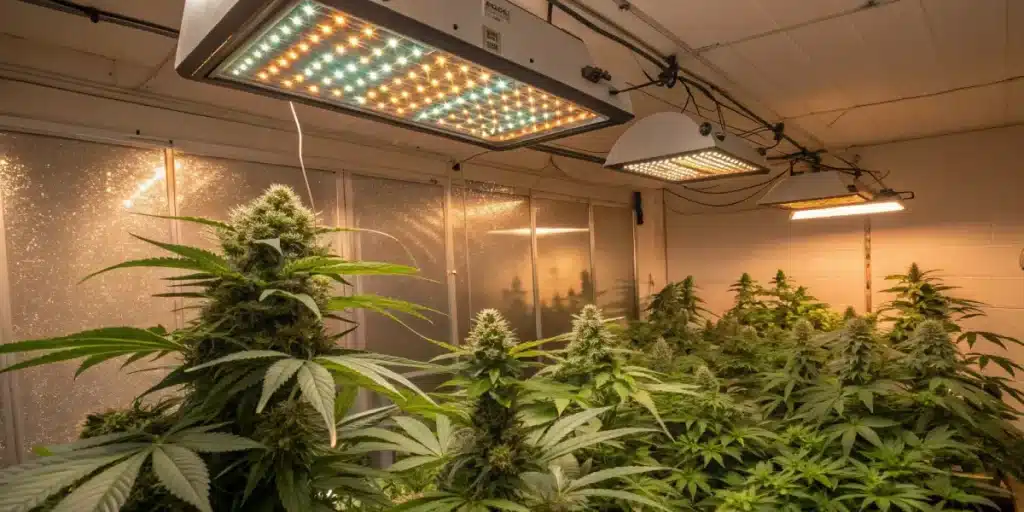
Best Light Schedule for Autoflowers
20/4 vs. 18/6: Which is Better for Autoflowers?
Autoflowering plants are not photoperiod-dependent, meaning they flower regardless of the light cycle. A 20 hours light and 4 hours dark schedule can maximize energy intake without overexerting the plants. However, many growers find an 18/6 schedule equally effective and more energy-efficient.
Choosing the best light schedule for cannabis autoflowers depends on your goals. While 20/4 might produce slightly higher yields, the 18/6 schedule offers significant savings on electricity without compromising quality. Balancing light intensity with plant health ensures steady growth and robust harvests.
Benefits of a 24-Hour Light Cycle for Autoflowers
Some growers experiment with a 24-hour light cycle for autoflowers, aiming for continuous growth. This approach eliminates the dark period entirely, maximizing photosynthesis and potentially speeding up development.
However, plants need rest periods to recover and process nutrients. A constant light schedule might work for certain strains but could stress others. Balance is key when deciding on a light cycle for your autoflowers. It’s also worth noting that continuous light can lead to diminishing returns if plants show signs of stress or nutrient lockout.
Factors to Consider When Choosing a Light Schedule
Strain-Specific Light Needs
Different cannabis strains have unique light requirements. While photoperiod strains rely heavily on precise light cycles, autoflowers are more flexible. Sativas, for instance, may thrive with longer light exposure, while indicas prefer more consistent periods of light and darkness.
Knowing your strain’s genetics helps tailor the best light schedule for cannabis, ensuring optimal growth and yield potential. Researching specific strain characteristics can also help predict how they’ll respond to variations in light cycles, especially under experimental conditions.
Energy Consumption and Cost Efficiency
Electricity costs can add up quickly, especially with long light cycles. Opting for energy-efficient grow lights, like LEDs, helps reduce expenses while providing the necessary spectrum for growth.
Balancing energy consumption with plant needs ensures both sustainability and profitability. Carefully planning your light schedule minimizes costs without sacrificing results. For larger operations, investing in solar-powered systems or energy audits can significantly offset long-term costs.
Effects of Light Intensity on Growth
Light intensity is as crucial as duration. Too much intensity can stress plants, while too little results in weak growth. Adjusting the distance between lights and plants helps maintain optimal intensity levels throughout the growth cycle.
Using dimmable lights allows for precise control over intensity, ensuring your plants thrive under the best light schedule for cannabis. Experimenting with light spectrums can also optimize growth at different stages, particularly when transitioning from vegetative to flowering phases.
Tips for Optimizing Your Light Schedule
Using Timers for Consistency
Timers automate light cycles, ensuring consistency and reducing the risk of human error. A reliable timer keeps your plants on schedule, providing them with the stability needed for healthy growth.
Automating your setup not only saves time but also improves overall results. Consistent lighting schedules are the backbone of successful cannabis cultivation. For advanced growers, programmable timers allow for gradual light shifts that mimic natural seasonal changes, further enhancing plant response.
Adjusting Light Distance for Each Stage
The distance between your plants and grow lights should vary depending on the growth stage. During germination, keep lights farther away to avoid overheating. As plants grow, gradually reduce the distance to maximize light exposure. Monitoring your plants’ response to light adjustments helps fine-tune the best light schedule for cannabis, ensuring healthy development and higher yields.
Balancing Natural and Artificial Light Sources
For outdoor or greenhouse setups, supplementing natural light with grow lights ensures plants receive consistent illumination. This approach bridges gaps during cloudy days or shorter daylight hours.
Combining natural and artificial light creates a hybrid system that maximizes growth potential while leveraging the benefits of both sources. Proper synchronization of these light sources helps maintain ideal conditions for robust plant development.
Advanced Light Techniques for Maximizing Yields
Supplemental Lighting for Better Bud Development
Supplemental lighting, such as UV or far-red LEDs, enhances bud density and terpene production. These specialized lights provide additional wavelengths that standard grow lights may lack.
Incorporating supplemental lighting into your best light schedule for cannabis elevates the quality of your harvest, producing more aromatic and potent buds. Strategic placement of these lights can target specific areas, optimizing light distribution for even better results.
DLI (Daily Light Integral) and Its Impact on Cannabis
DLI measures the total light exposure a plant receives in a day. Managing DLI ensures your plants get just the right amount of light for their stage, avoiding stress or underperformance.
Using tools to calculate DLI helps growers refine their light schedules, leading to more precise and productive cultivation practices. This metric is particularly valuable for commercial growers aiming for consistent quality across large operations.
Incorporating UV and Far-Red Light in Your Setup
Adding UV light enhances trichome production, while far-red light promotes flowering. These additions can significantly improve yield quality when integrated into your lighting strategy.
Experimenting with these advanced techniques allows growers to push the boundaries of what’s possible with the best light schedule for cannabis. Understanding the interplay between different light spectrums can also improve plant health and resistance to environmental stressors.
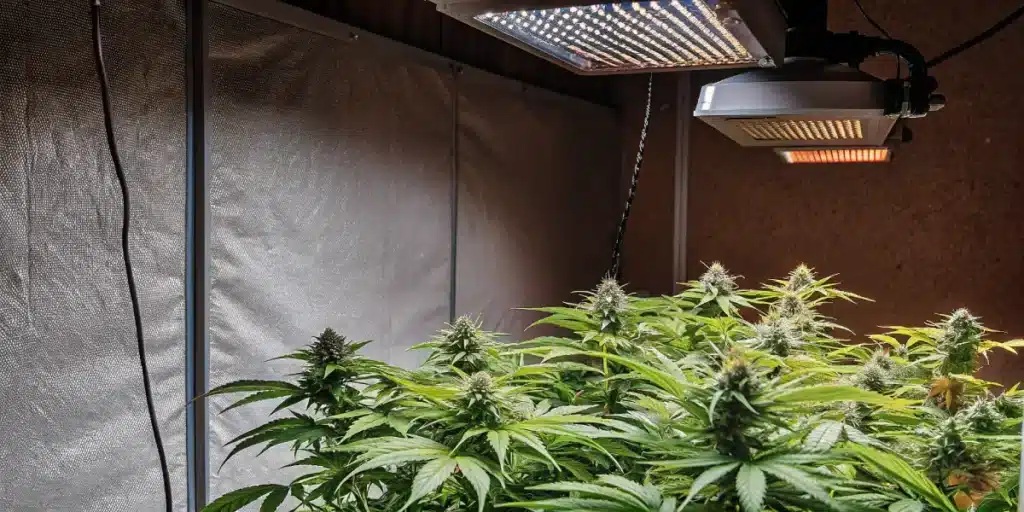
Common Mistakes in Cannabis Light Schedules
Overexposure to Light and Plant Stress
Exposing plants to excessive light can lead to stress, reducing their ability to grow and produce buds. Symptoms include yellowing leaves and stunted growth. Avoiding overexposure ensures your plants remain healthy and productive. Regularly monitoring light intensity and duration prevents unnecessary setbacks. For newer growers, understanding the signs of light stress can help address issues before they escalate.
Inconsistent Light Cycles and Growth Disruptions
Inconsistent light cycles confuse plants, disrupting their natural growth patterns. This issue is particularly detrimental during the flowering stage, where precise timing is crucial. Investing in reliable timers and carefully monitoring light schedules ensures your plants stay on track, producing consistent yields. Regular maintenance of equipment also minimizes disruptions caused by technical failures.
Neglecting Light Leak Prevention During Flowering
Light leaks during the dark period of the flowering stage can halt bud production. Even small amounts of light can confuse plants, delaying or reducing yields. Sealing your grow space and conducting regular checks for leaks ensures your best light schedule for cannabis remains effective. This simple precaution protects the integrity of the flowering process, leading to better results.
FAQs About Best Light Schedule for Cannabis
What is the best light schedule for cannabis during the vegetative stage?
The optimal light schedule for cannabis during the vegetative stage is 18 hours of light and 6 hours of darkness. This balance allows plants to grow vigorously while also conserving energy. Using high-quality grow lights ensures the plants receive the full spectrum needed for robust growth and development.
Can I use a 24-hour light schedule for cannabis?
While a 24-hour light schedule can be used, it is generally recommended only for autoflowering strains. Photoperiod cannabis plants benefit from a dark period for rest and nutrient processing. Overexposing photoperiod plants to continuous light can lead to stress and reduced growth efficiency.
How do I prevent light leaks during the flowering stage?
To prevent light leaks during the flowering stage, ensure your grow space is completely sealed. Check for gaps around doors, windows, or vents, and use lightproof materials like blackout fabric to cover any openings. Even minor leaks can disrupt the flowering process, so regular inspections are essential to maintaining your best light schedule for cannabis.


